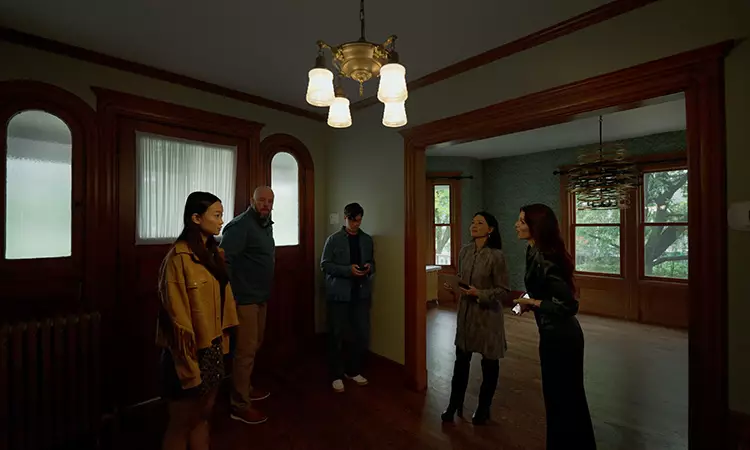The latest collaboration between director Steven Soderbergh and screenwriter David Koepp, “Presence,” offers a striking divergence from standard supernatural dramas by inviting the audience to experience life through the eyes of a ghost. Rather than relying on traditional horror tropes, which often prioritize jump scares over emotional depth, this film presents an intricate meditation on grief and the human experience as seen by an unseen observer. By situating the narrative within a family’s dynamics, it taps into both their daily joys and sorrows—an endeavor that can be both enlightening and unsettling.
At first glance, “Presence” may evoke comparisons to films like “Paranormal Activity” or “Personal Shopper,” which balance eerie moments with emotional undertones. However, what sets it apart is its nuanced examination of modern anxieties, particularly those related to parenthood in an increasingly digital environment. Soderbergh’s choice to represent these themes through long, flowing camera shots creates a dreamlike experience that bends the line between reality and the spectral world. The film engages viewers in a conversation about the pervasive influence of technology, aligning this with the broader societal fears surrounding social media’s impact on familial relationships and individual lives.
The film’s heart lies within the family unit portrayed by Lucy Liu and Chris Sullivan as concerned parents, navigating their own grief while trying to support their teenage children. Callina Liang’s portrayal of Chloe, a young girl burdened by the loss of her best friend, is particularly stirring, presenting a raw and relatable depiction of loss. Meanwhile, Eddy Maday as Tyler, a devoted swimmer, provides a foil to Chloe’s sorrowful journey, intertwining themes of aspiration and sadness. The inclusion of supporting characters, including the psychic Lisa and her husband, only deepens the exploration of human emotions and otherworldly insights, thus amplifying the film’s tension and intrigue.
“Presence” stands out not solely for its eerie ghostly elements, but for how it deftly addresses the pervasive notion of surveillance in contemporary society. Soderbergh’s technique of using wide-shot selfies resonates with Gen Z’s digital existence, urging viewers to contemplate the consequences of perpetual visibility. While the film’s narrative arc takes a twist that some may find convoluted, this complexity serves to amplify the underlying message about power dynamics and manipulation, making it a crucial watch for those interested in psychological depths. The emotional resonance captured in quieter scenes, particularly between father and daughter, imbues the film with a haunting melancholy that lingers well after the credits roll.
In blending the spectral elements with profound familial dynamics, “Presence” transcends conventional genre boundaries, delivering a film that invites both introspection and unease. Soderbergh’s masterful direction, coupled with Koepp’s poignant screenplay, crafts an immersive experience that challenges viewers to confront their own fears regarding loss, connection, and the relentless march of technology. As a result, “Presence” emerges as not only a ghost story but a reflection of our times—a chilling reminder of the fragility of human connections in a world increasingly shrouded in digital distractions.

